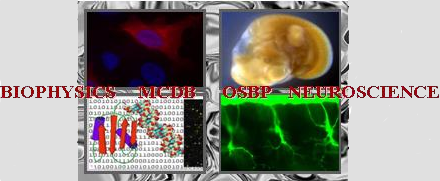Poster abstracts
Poster number 78 submitted by Carmine Sonzone
The microbiome in lung and breast cancer: An RNA-seq analysis
Carmine M. Sonzone (OSU, MCDB Program), Xiaodan Mai (Univserity at Buffalo, Epidemiology and Environmental Health), Daniel Weng, Catalin Marian (OSUCCC), Max Westphal, Alex Pelletier, Angela Urdaneta, Paige Stump, Cameron Stump (OSUCCC Genomics Shared Resource), Pearlly Yan, Ralf Bundschuh (OSUCCC Genomics Shared Resource, OSU Division of Hematology), Jean Wactawski-Wende, Jo Freudenheim (Univserity at Buffalo, Epidemiology and Environmental Health)
Abstract:
There is increasing evidence that the microbiome profoundly affects human health and disease, including cancer. There is separately substantial data for the role of inflammation in carcinogenesis, which we postulated is related to alterations in the microbiome of normal tissues and tumors. The presence of bacteria in breast and lung cancers has been documented, including by us, but a comprehensive analysis of the microbiome has not been done, nor a linkage to chronic inflammation. It is our hypothesis that specific bacteria or a change in the pattern of bacteria (dysbiosis) induce chronic inflammation that leads to breast and lung carcinogenesis. For the lung, bacteria enter the lung through direct inhalation while smoking. For the breast, there are multiple ways that bacteria will reach the breast, including blood dissemination from the oral cavity and gastrointestinal tract, or retrograde entry while breast feeding. The goal of this study is to confirm the presence of bacteria in lung (n=30) and breast cancer (n=30) as well as adjacent normal tissue, demonstrate that bacteria can be found in lung (n=10) and breast tissue (n=10) of healthy individuals without cancer, and relate the bacterial presence to inflammation. We will identify which bacteria are also present in the oral cavity, GI tract or tobacco. Our data demonstrate that there are numerous live bacteria present, and a prioritization scheme has identified at least 16 potential pathogens in breast cancers and 27 potential pathogens in lung cancers. Justification for the oral cavity as a potential sight of origin for these tumor bacteria is the observation that a majority of the bacteria identified by our prioritization scheme have been identified by others as normal flora of the oral cavity. This study is innovative in both testing a novel hypothesis for breast and lung cancer etiology and use of state-of-the-art next generation RNA-sequencing. The significance of this study is the potential to identify an entirely new avenue of investigation for breast and lung cancer risk. The presence of bacteria, as well as dysbiosis, and an understanding of the associations with inflammation could provide new methods and markers for prevention, prognosis and treatment (e.g., a differential effect by new immunotherapies and pathways stimulated by bacterial infections).
Keywords: RNA-seq, Cancer, Microbiome
